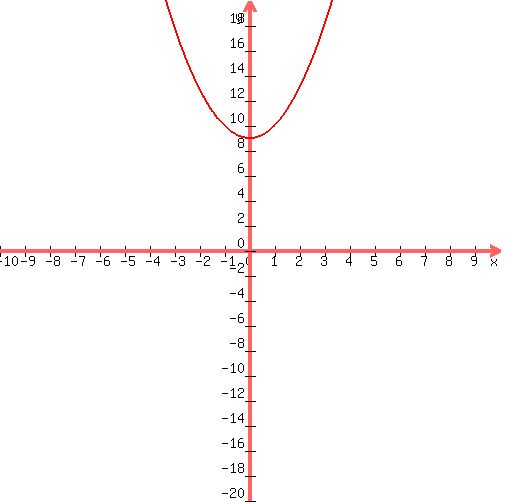Question 167757: If you are looking at a graph of a quadratic equation, how do
you determine where the solutions are?
Answer by Alan3354(69443)   (Show Source): (Show Source):
You can put this solution on YOUR website! If you are looking at a graph of a quadratic equation, how do
you determine where the solutions are?
----------------
If it's the usual y = a quadratic in x, it's where it crosses the x-axis.
For example:
| Solved by pluggable solver: SOLVE quadratic equation (work shown, graph etc) |
Quadratic equation  (in our case (in our case  ) has the following solutons: ) has the following solutons:

For these solutions to exist, the discriminant  should not be a negative number. should not be a negative number.
First, we need to compute the discriminant  : :  . .
Discriminant d=49 is greater than zero. That means that there are two solutions:  . .


Quadratic expression  can be factored: can be factored:

Again, the answer is: 4, -3.
Here's your graph:
 |
If there are no real solutions, it won't cross the x-axis.
| Solved by pluggable solver: SOLVE quadratic equation (work shown, graph etc) |
Quadratic equation  (in our case (in our case  ) has the following solutons: ) has the following solutons:

For these solutions to exist, the discriminant  should not be a negative number. should not be a negative number.
First, we need to compute the discriminant  : :  . .
The discriminant -36 is less than zero. That means that there are no solutions among real numbers.
If you are a student of advanced school algebra and are aware about imaginary numbers, read on.
In the field of imaginary numbers, the square root of -36 is + or -  . .
The solution is  , or , or
Here's your graph:
 |
|
|
|